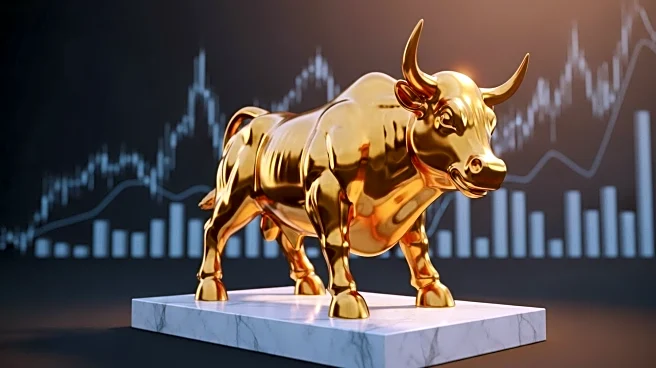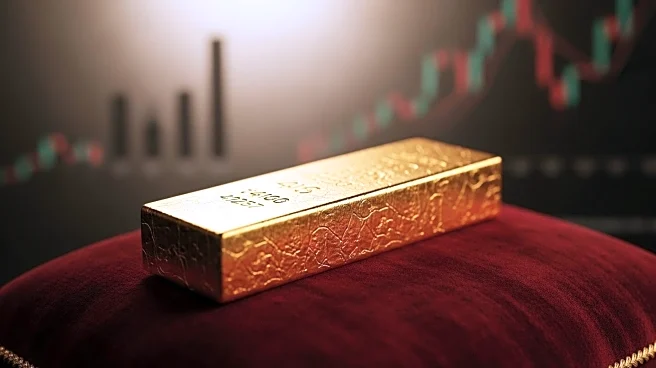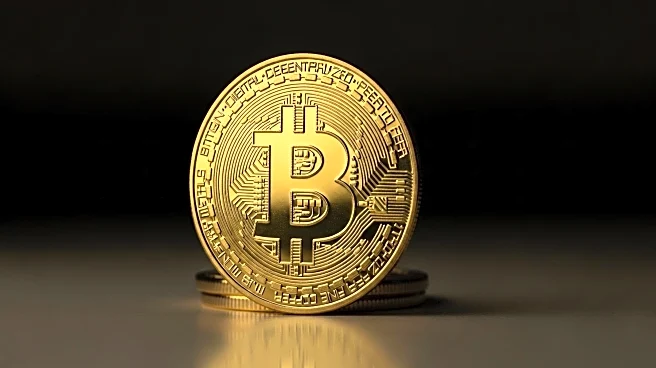What is the story about?
What's Happening?
Gold prices are nearing $4,000 per ounce, marking a significant increase of about 50% this year. This surge is attributed to heightened demand from investors, money managers, and central banks seeking a safe haven amid ongoing political and economic uncertainties. The current rise in gold prices is reminiscent of the 1979 surge, which was driven by high inflation, a depreciating dollar, and geopolitical tensions. Analysts suggest that the current political upheaval, including the U.S. government shutdown, has prompted investors to move away from U.S. assets, contributing to the gold rally. Additionally, traditional safe havens like the U.S. dollar and government bonds have become less attractive, partly due to the Federal Reserve's interest rate cuts, which have weakened the dollar by approximately 10% this year.
Why It's Important?
The rising gold prices reflect a broader sense of unease among investors, despite record highs in the stock market. This trend indicates a lack of confidence in traditional U.S. financial assets, which could have significant implications for the U.S. economy. The Federal Reserve's monetary policy, aimed at stimulating the economy through rate cuts, may inadvertently weaken the dollar further, affecting international trade and investment. The downgrade of America's credit rating by Moody's adds to concerns about the country's fiscal health, potentially impacting borrowing costs and economic growth. As gold becomes a preferred asset, it underscores the challenges facing U.S. economic policy and the need for stability in government operations.
What's Next?
If the current political and economic uncertainties persist, gold prices may continue to rise, further attracting investors seeking stability. The Federal Reserve's future actions regarding interest rates will be closely watched, as they could influence the dollar's value and investor sentiment. Additionally, any resolution to the government shutdown or changes in fiscal policy could alter the current dynamics, potentially affecting gold's appeal as a safe haven. Stakeholders, including policymakers and financial institutions, will need to address these challenges to restore confidence in U.S. financial markets.
Beyond the Headlines
The surge in gold prices highlights deeper issues within the global financial system, such as the reliance on traditional safe havens and the impact of geopolitical tensions on economic stability. The shift towards gold may also reflect broader concerns about the sustainability of current economic policies and the long-term implications of fiscal deficits. As investors seek alternatives to U.S. assets, there may be increased interest in diversifying portfolios with commodities and other non-traditional investments, potentially reshaping global financial markets.
AI Generated Content
Do you find this article useful?













